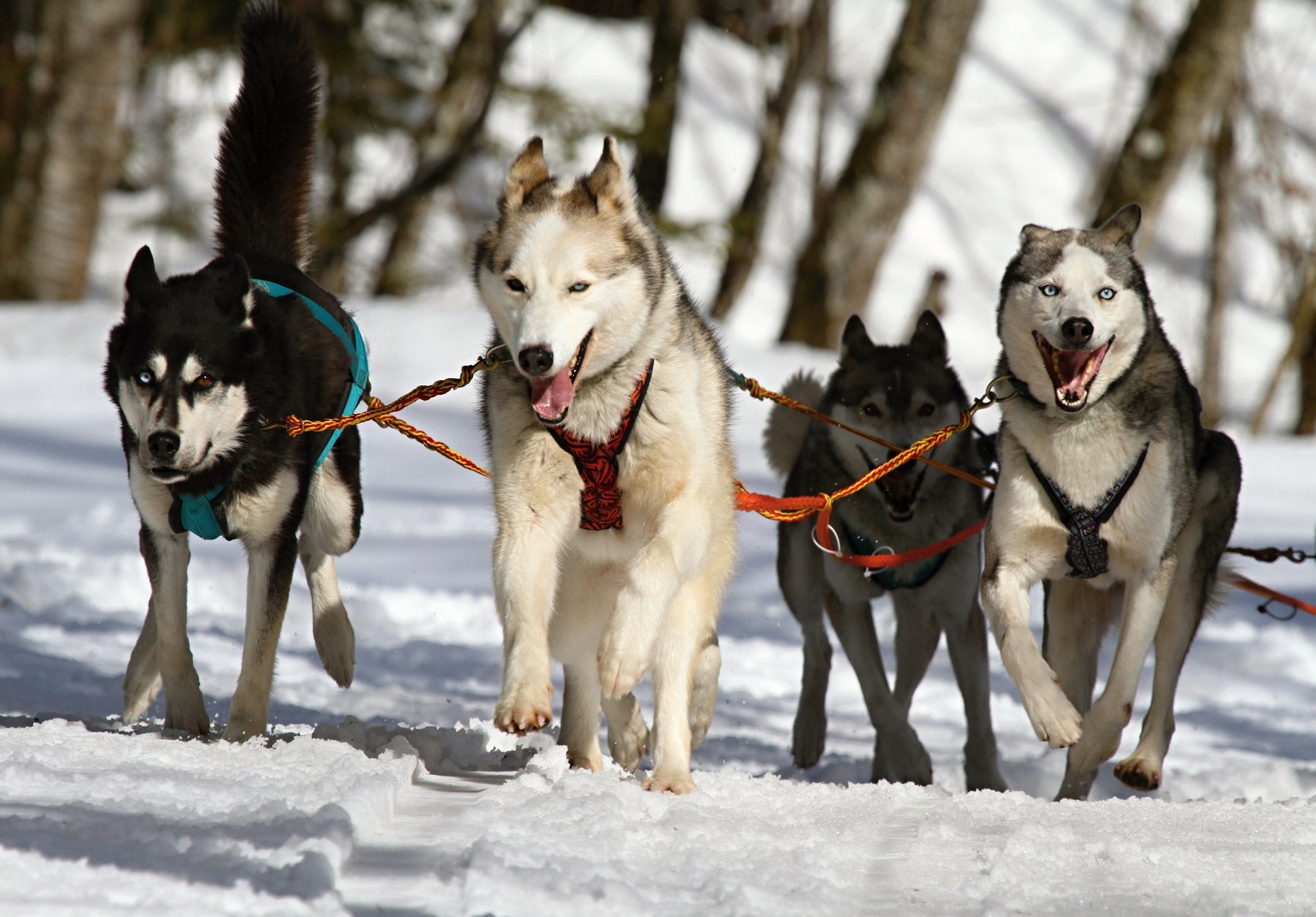
4 Things to Know Before Getting a Husky
Shelters all over the country are seeing a larger than usual influx of huskies the last few years. They are friendly, social, and majestic-looking dogs — and given the popularity of Game of Thrones, lots of people out there are determined to have their own “Dire Wolf.”
Now, I’m not saying you’re one of those people! But what I am saying is this breed requires some extra forethought before you bring them home, because they aren’t always meant for a new or timid owner... like yours truly!
I’ve done some reading and want to share the 4 most important things you need to know before adopting a Husky — as a puppy OR an adult.
1. Huskies are highly active, “working” dogs
Huskies are sled dogs, so they love to work. They’ve got tons of energy and stamina, which is something people underestimate in the beginning.
By adulthood, they should get two hours of exercise per day. As a puppy, you should follow the five-minute-a-month rule. For example: if your puppy is three months old, walk them for 15 minutes a day. A six-month-old pup will get 30 minutes a day, and so on. By the time they’re a year old, they’ll be up to an hour of walking a day.
This high level of activity isn’t limited to walks. You’ll need to make sure you’ve got good yard space, and at least a six-foot fence. Huskies are athletic! They love to dig, too, so make sure the fence is reinforced below ground level.
As active as Huskies are, they are just as intelligent! They learn fast, so you can always introduce them to both indoor and outdoor enrichment activities that exercise both brain and body.
2. Huskies are prone to isolation distress & separation anxiety
Lots of dogs get visibly upset when their favorite humans leave the room — or house — entirely. But with Huskies, it’s usually a lot more pronounced.
Isolation distress just means the Husky doesn’t like being alone. Often, any human will do, as long as they have company and stimulation. Separation anxiety goes a little further in that your Husky Only. Wants. YOU. They can get exercise and food, be given toys by another, but this doesn’t always stop the pacing, panting, whining, or even self-mutilation — be it to break out of a crate, or because they’ve destroyed everything in the room that they can and there’s nothing left.
And if you’re not ready for this... it can be overwhelming. Even scary.

Desensitization and counter conditioning methods for things like grabbing your keys, putting on your shoes, or grabbing your coat can go a long way in helping your Husky.
You can also have your Husky do a sit-stay inside of a room, and then start closing it for a little at a time, for one second, then 3, then 5, and so on.
Any time you’re doing these things and your Husky is calm, make it rain their favorite treats!
Depending on the Husky, this can take a long time, and it will require a lot of patience! If at any time you’re feeling overwhelmed you can always contact a force free, positive reinforcement trainer in your area.
3. Huskies are super chatty!
And I don’t mean barking... it’s more like vocalizing or howling. If you listen closely, it’s almost like Huskies are trying to mimic human sounds!
Earlier I mentioned Huskies are social. They’re sled dogs, so they’re working on a team — and often with humans, too.
This just means that they’re social and they’re showing it. It’s not really a problem, it’s just something you want to be ready for.
4. Get ready for grooming galore!
Huskies are double-coated dogs, so their grooming needs can be overwhelming if you don’t know what to expect.
They can be bathed every four to six weeks. If you do this at home, make sure to rinse your dog thoroughly — all that fur is a magnet for shampoo and conditioner buildup, which can lead to matting. And speaking of matting...
You’ll need to brush them every day. And when they shed their undercoat in spring and fall, you’re going to feel like you’re buried in fur!

You can help the process of undercoat shedding by ramping up your daily grooming process. Start with a wide-tooth comb to stay ahead of any matting, followed by a paddle brush to smooth things out. Some Husky owners go a step further and buy a dog blower. A strong one can blow out your dog’s undercoat in a few minutes!
It’s okay if you don’t want to do that extra on your own: seasonal appointments with a groomer will help! Just make sure the one you choose fully understands the needs of double-coated dogs.
If you’ve got one (or more!) of these floofy wonders at home, tell us about your experiences living The Husky Life. We love hearing from our readers!
Did you enjoy this post? Please give it a like and share it with your friends! Thanks! 🐶❤️🐾
